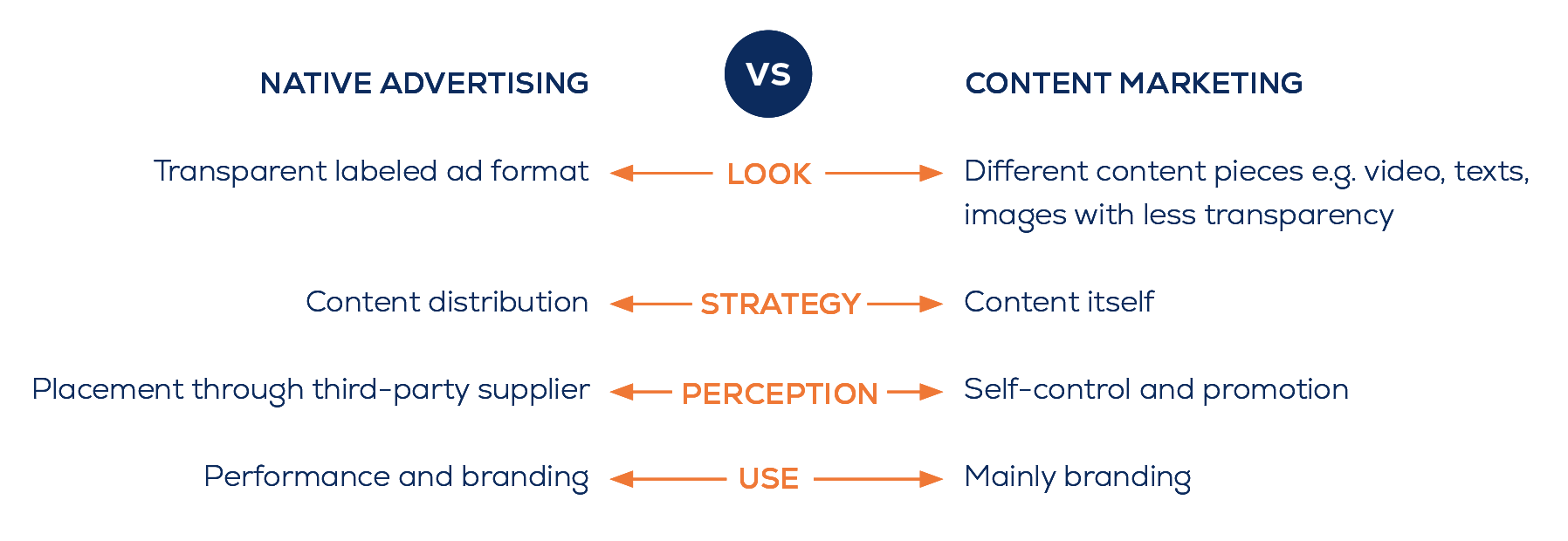Advertising
or content marketing:
why choose?
It’s a familiar debate among B2B marketeers with way too much time on their hands: should you stick with good old advertising or throw all your effort behind content marketing like all the cool kids are doing? As with most things, the answer isn’t black and white. And to save you having to trawl through this entire piece of content (meta, or what?), let’s cut to the chase. In this day and age, if you want to optimise your marketing spend you need to combine both.

Pat Rawle
Here’s why you should combine advertising and content marketing
Back in the day it was so simple. You did advertising. There really wasn’t much choice. Advertising was a great way to get your product or brand in front of the people who mattered. All you needed to know was which magazines or newspapers they read and then maintain a barrage of brand ads (to lodge your brand’s name in their heads long term) along with a regular sprinkling of product ads to catch those readers who were actually ready to buy at any one time. Interesting fact: roughly 95% of companies in a category are not in the market for a B2B product at any given time (www.marketingweek.com/ehrenberg-bass-linkedin-b2b-buyers), so you want to be pretty damn sure you’re reaching the 5% who actually have money to spend.
Back in the day it was so simple. You did advertising. There really wasn’t much choice.
Online marketing and advertising: opportunities too good to miss
But with the advent of digital suddenly there were so many new possibilities. Now there were entirely new ways to reach your target audience – and even interact with them. It turned out that people online don’t like being badgered by advertising and gradually a more subtle method of marketing emerged – content marketing. In short this was about playing the long game. By giving people interesting and useful information you create positive associations in their heads so, when the time comes to make a purchasing decision, your brand will be ‘top of mind’.
Quality marketing not quantity (as ever)
In a way, that’s not so different from ‘brand advertising’ in print. Both methods are all about getting deep into the psyche of the target, giving them a warm feeling about your brand almost without them thinking about it. But content marketing does more. Once you have got someone to download your content you have their contact details, and then the marketing possibilities really explode – as long as you don’t blow it by sending them too much – or just poor quality – content and push them to ‘unsubscribe’. If you’re going to produce content, it needs to be good. It needs to be interesting and relevant. Original and timely. That takes effort. There’s a company called Hubspot that is great at this.
Speaking from personal experience, I’ve downloaded so many useful marketing and copywriting-related booklets from them, it’s unbelievable. Awesome content. Thanks very much! Trouble is, as pure copywriter, I don’t really know what Hubspot does. Yes, I’ve got their name in my head and a fuzzy feeling because they give me free stuff but I’m just freeloading. There’s zero prospect of me ever purchasing from them whatever it is they make or do. At the other extreme, I love checking out company blogs and reading the absolute drivel they churn out behind the rallying cry of “Yay! Content!”. Scroll to the end of each blog and see the number of comments and likes. Zero. It’s not uncommon these days for those stats to no longer appear because frankly they can be embarrassing. (Reminder to self: do not check the stats on this)
New marketing jargon. Same old advertising story.
Whether it’s advertising or content marketing, both have the same goal. In today’s jargon, that goal is building ‘mental availability’. According to Kantar.com: “The recipe for growth is to build a brand’s penetration by increasing its mental and physical availability. Mental availability refers to the need for a brand to come to quickly to mind in relation to a specific need or occasion. Physical availability refers to the need for the brand to be easy to buy.” For any old-timers out there, these are modern expressions of two of the traditional ‘4 Ps’ of marketing – Promotion and Place. Sigh, nothing is new really.
Both advertising and content marketing are all about getting deep into the psyche of the target, giving them a warm feeling about your brand almost without them thinking about it.
As mentioned in the first bit
But the upshot of all this is that both advertising and content marketing are both very good at what they do – as long as they are done well. For every example of good practice, there’s a hundred examples of bad advertising and bad content marketing which are a complete waste of a client’s money. At the end of the day it’s about getting the right message in front of the right people at the right time – and traditional advertising can still be extremely effective at this, especially for B2B clients where the media are very targeted. These days there are so many channels – online and off – and to remain ‘top of mind’ doesn’t mean choosing one over the other but being consistent and persistent across all those channels that your particular target audience is reading or looking at.



